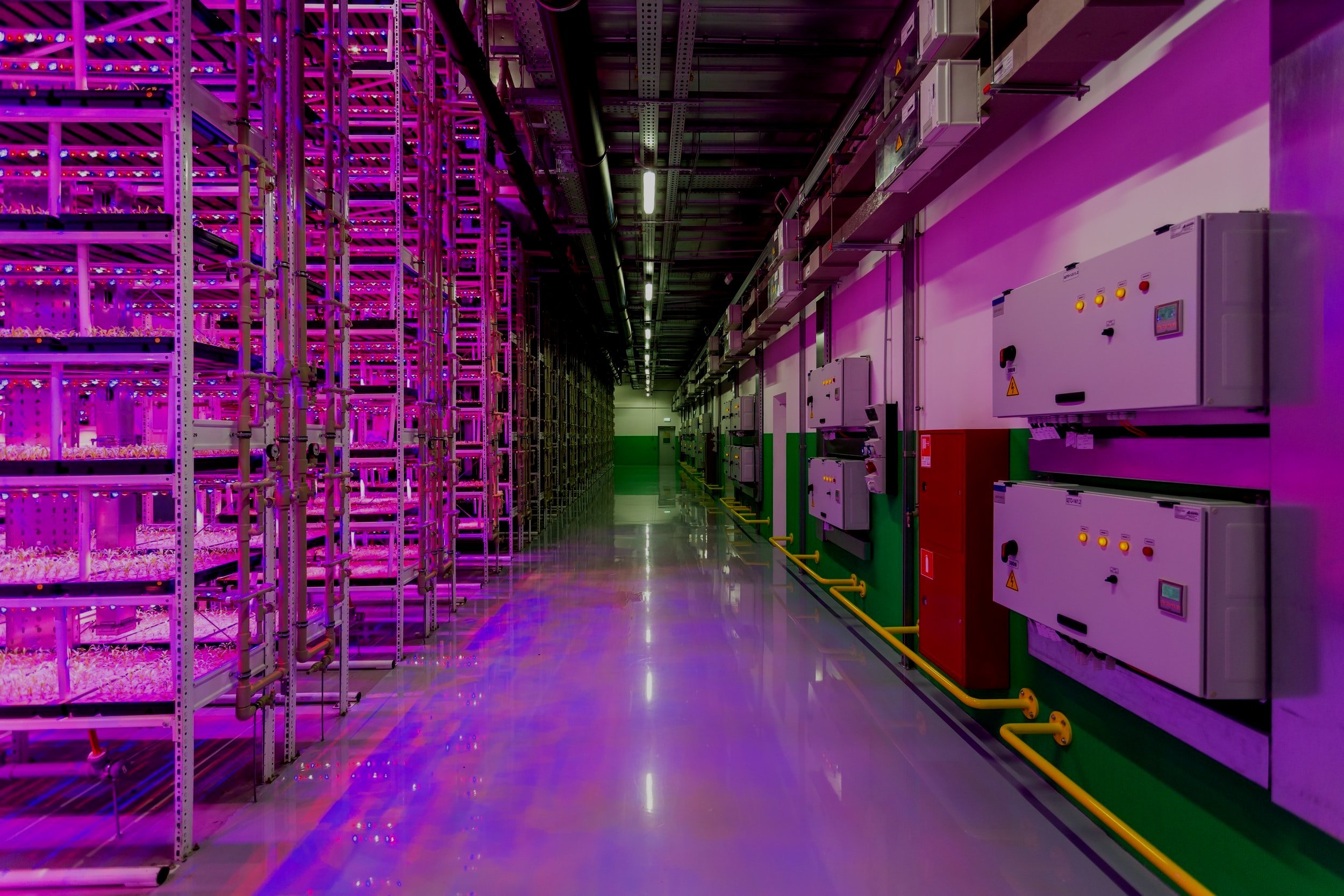
As pressure increases to create more smart buildings, industries from healthcare, education to corporate have started to explore the benefits that circadian lighting can bring to support the occupant's wellbeing and circadian health. One of the ways this can be achieved is through circadian supportive algorithms.
Circadian lighting follows the natural sleep/wake cycles of our internal body clock. Our strategically designed system has the power to positively affect building occupant's productivity, decrease sick days and increase alertness.
Human-centric, bio-dynamic, bio-adaptive, chronobiologic, biophilic, circadian, melanopic… whichever term you use, the premise of circadian lighting is to support our natural circadian rhythm by replicating natural light
Light is the biggest synchroniser of our 24hour internal body clock; natural light is the best way to keep your body clock in sync. It is only relatively recently that humans have begun to live indoors. Previously, humans lived in caves and used daylight to hunt and gather - therefore, day to day activity centred around daylight.
However, in a world where we are now always 'on' and constantly digitised it is easy for our rhythms to become out of sync, e.g. sitting under a bright white office light all day, in front of a bright computer screen, finishing the working day and sitting in front of the TV all night whilst checking your emails and scrolling through social media – it is understandable why as many as 16m UK adults are suffering from sleepless nights.
Another industry that can benefit considerably from circadian lighting and sophisticated lighting algorithms is vertical farming. The absence of natural light in this environment means granular control of artificial light is essential to create the best conditions for crops to flourish.
What are the benefits of circadian lighting?
Research studies indicate that circadian lighting can lead to improved mental health, sleep patterns, comfort, productivity, and general wellbeing.
The result of having a circadian rhythm that is out of sync for a prolonged period of time has been linked to the development of several physical and mental conditions.
A study published by Diabetes UK even links excessive exposure to artificial light at night with the development of type 2 diabetes. Read more at Diabetes.co.uk.

Circadian Lighting Algorithm
The SmartCore circadian lighting system provides artificial light that supports human and plant biological cycles in the same way as natural light. The SmartCore solution delivers sophisticated lighting through the colour, intensity and location of light - without complex programming.
All living organisms are governed, to some degree, by an internal body clock - a 'circadian cycle'. Light is one of the biggest synchronisers, and the timing, intensity, and colour of light are key factors in regulating human circadian cycles as well as photosynthesis in plants.
Disturbances in human circadian rhythms can have a physiological and mental impact and often causes poor sleep patterns. In vertical farms, the absence of natural light means that artificial light settings are vital; if this is lacking, it will dramatically affect the harvest's quality.
In addition, Circadian Light-Scenes can be used in conjunction with standard dimmable lighting as well as variable white lights and full colour-spectrum LEDs. As SmartCore is a vendor-agnostic software platform with open architecture, client's have flexibility when choosing hardware. Or we can support OEMs directly, adding additional value to their solution.
The colour spectrum of light can be altered to support aspects of human behaviour and plant growth that benefit from varied and changeable lighting. This is particularly important in vertical farming as different crops will require different conditions; hence personalisation on a granular level is essential.
Got a question? Don't hesitate to give us a call…
Personalised and granular control of light is essential.
A research study published by MDPI showed that for the growth of lemon balm, blue light at 450 nm promoted growth and increased the yield, and blue at 435 nm had a significant impact on photosynthesis activities.

SmartCore can be particularly beneficial for the following sectors:
The Workplace
Recent studies have shown that the productivity of office workers has increased by up to 20% following the introduction of human-centric lighting.
Read the full article here.
amBX SmartCore is equipped with a range of Light-Scenes for the workspace, including variable daylight scenes as well as Circadian Lighting options. Implementing SmartCore enables workplaces to: save money, become more sustainable and efficient, retain staff through improved wellbeing, boost mood, and increase productivity.
“People are the most important asset of an organisation. Why not provide them with the best lighting pattern we can? Providing occupants with proper Circadian Lighting is similar to providing them with ergonomic chairs or flat-screen computer monitors.”
- Mariana Figuero, Professor and Light and Health Program Director, Lighting Research Center, Rensselaer Polytechnic Institute.
Vertical Farms
The Vertical Farming market has grown rapidly in the last decade, it is gaining a lot of academic interest and many research studies investigate the benefits of smart technology such as circadian supportive lighting to get the very best harvest.
Crops need light to grow and begin the process of photosynthesis, converting light energy into chemical energy. But the intensity, colour, wavelength and timing of light are all vitally important.
At amBX, we can help to enhance your solution with granular control and monitoring, allowing a healthier harvest to be achieved.
We can ingest data from various sources, including lighting, Co2, humidity, temperature, irrigation and more.
Our sophisticated lighting algorithms have been developed over a 14 year period and are backed by academic research and guidance. Fine granular control and automated light scenes have been developed for the farming sector, and all of this can be delivered without complex programming; the user can simply and easily adjust light settings to achieve the best results.
Care Environments
Managing the colour spectrum and intensity of lighting is particularly important in environments for elderly care.
As the human body ages, both day and night vision deteriorate. Moreover, light can often cause confusion if there is a glare or an unusual pattern. This is heightened when a person suffers from some sort of cognitive condition, such as dementia or another severe memory problem, which The Alzheimer’s Society reports around 80% of care home residents experience.
Care home residents are surrounded by artificial light 24 hours per day. This emphasises the importance of good lighting, and the potential impact that switching to a circadian lighting system could have upon a care home resident’s quality of life.
Read more about understanding care home environments here.
Lorraine Calcott, a leading lighting designer, is working with amBX to advise the most effective way to deliver and manage circadian lighting for dementia care environments. Lorraine specifies that full-spectrum lighting works not only with our emotional responses to light but also on our biological response, helping reset and maintain our body’s circadian rhythms.
Educational Environments
Research has proven that there is a clear relationship between lighting and the performance of students. The right lighting can promote calmness, reduce feelings of lethargy, improve attention rates and boost productivity, motivating students to learn.
To improve the attention span of students and therefore productivity in the classroom, the right combination of light intensity and colour is essential.
Connected sensor networks can monitor any variables you may require, such as the noise level in a room. If a class has become loud and disruptive, the lighting can react in real-time to subtly adjust the ambience, resulting in a calming effect. Every room can be unique; sensors can monitor a wide variety of aspects that grant building managers a real insight into how a space is being used. Natural light can be maximised as much as possible, saving money on artificial light where it isn’t necessary. Different zones can be accommodated easily and seamlessly, creating the right ambience depending on what the space requires e.g. a sensory room for creative learning, or an exam hall for high productivity and concentration.






